Portable Rock Art – Changing Archaeology Forever?
By Carell
Published in Ancient American Magazine, June 2019
What if the ancient lithic (stone tool) industry created tools embellished with art that modern humans fail to perceive? Is it possible that what we think of as simply “stone tools” —and, in some cases, just “rocks”—are multi-purpose artifacts recording an ancient art style, apparently not limited to just one culture or time? Can paleo (ancient) rock art be distinguished from simulacrum and pareidollia to become recognized as an age-old art form that often complements the functionality of some stone tools? This article explores these possibilities.
Archaeological artifacts include early stone tools classified by their utilitarian application, era of use, locale and/or type of workmanship. The earliest of these artifacts are often referred to as eoliths. In the 19th century these items were considered to be the original tools created by early humans, but later they came to be seen as natural, or geofacts. Today, the term “eolith” is often used to dismiss, as “natural,” the unknown or unrecognized features that exist in artifacts or rocks.
The phenomenon of “seeing faces in rocks” is common and is generally referred to as pareidollia, the perception of apparently significant patterns or recognizable images, especially faces, in random or accidental arrangements of shapes and lines. The word is associated with faulty perception of seeing patterns in random details of rocks and natural features, often referred to as apophenia. Pareidollia is also associated with mimeotoliths, rocks that mimic recognizable forms through random processes of formation, weathering and erosion. The term simulacrum or “simulacra” (plural) is also often used in referring to natural landscapes, geological features and objects such as rocks that appear to have organized attributes that are unreal, usually resembling faces.
I have proposed using the term “artfacts,” in addition to “portable rock art,” to distinguish paleo rock art from conventionally understood artifacts, eoliths, mimeotoliths and geofacts, and to both recognize and differentiate artfacts from simulacrum, apophenia and pareidollia. Artfacts can be defined as a classification of ancient rocks and stone creations consisting of lithic assemblages or technological characteristics including worked representations of faces and animals onto rocks and stone tools. Portable rock art has been documented by other researchers, is prevalently distributed throughout North America and Europe, and is also referred to as microlithic sculptures as well as anthropomorphic paleolithic sculptures.
Artfacts/Portable Rock Art: What is it?
Credible paleo artfacts include lithic art created by ancients to enhance natural stones or to adorn stone tools. The most exceptional artfacts contain micro-etchings that can easily be confused with natural lines, layers or patterns in rocks. The ancients integrated enhancements into natural features to create shapes, images and micro constructions with a predominance of human and animal faces and shapes. Artfacts can also be “effigies,” like carved figurines or sculpted representations, without any functionality or tool aspect.
Paleo rock art from around the world ranges in style, method, and age and includes cave paintings; petroglyphs and pictographs; carved rocks and engraved stone as exemplified by Mayan iconography on portable ceremonial objects. Artfacts have a wide range of groupings, including slight additions on tools compared to extensive art-laden embellishments on artfacts having little or no functionality whatsoever.
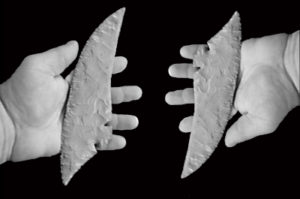 Image 1. Common example of seeing only a tool and missing the art
Image 1. Common example of seeing only a tool and missing the art
Image 1 , enhanced photos from an internet stone-tool collection, depict a well-crafted stone knife displayed on the left; however, when turned 180 degrees, the artfully sculpted face is revealed by recognizing the basic elements of artfact assemblages, which are the eyes or eye, nose and mouth within an assemblage that defines the profiled face inclusive of the forehead (or cap) and chin.
Artfacts largely have been overlooked due to both a single-minded focus on utilitarian characteristics and modern perceptions that are neither tuned into nor aware of artistic assemblages or enhancements. Commonly accepted archaeological approaches addressing ancient art forms have limited moderns from seeing beyond known patterns and accepted concepts in archeology, anthropology and art history. Contemporary limitations that have hindered serious surveys include biases against micro art (“too small to be significant”) and portable rock art (“the ancients wouldn’t take time to embellish disposable tools with art”). In short, if we’re not looking for something and it’s not familiar to our cognitive recognition abilities, we fail to recognize the obvious, which actually may be art in plain sight.
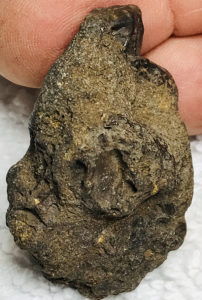
A
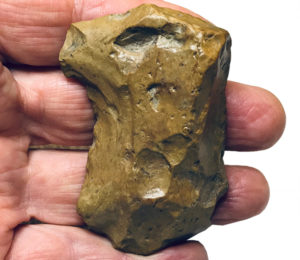
B
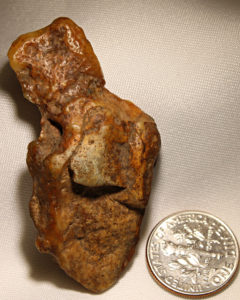
C
Learning to See Artfacts
Artistic forms found on portable stones have been identified from many different locations, yet remain mostly “hidden” from modern view. There is little conceptual understanding for the untrained eye to decipher many common, ancient forms and readily recognize their arrangements and appearances. The accompanying photos exemplify well-crafted artfacts with many details. While the human and animal shapes may be obvious to some, most artfacts may not be readily recognizable.
Photo 2. Artfact examples from Kansas
The shape of artfacts is a starting point for investigations. With correct positioning in one’s hand, recognizable and intentional shapes become more apparent. For example, photo B above is an obvious well-worked tool, but unless viewed from the right position the central animal-shape may not be recognized.
One of the most significant tools we can use to appreciate many artfacts is side-lighting, which reveals surface micro-etchings, intrusions, sculpted layers and other workings not apparent when viewing it directly, under overhead lighting, or dull or indirect light. Side-lighting, commonly referred to as raking light, brings out the details that are created by pecking, abrading and etching on the rock surfaces, both on fixed petroglyphs and on portable rock art. In portable rock art the side-lighting effect is achieved by moving the properly positioned artfact under the right lighting conditions and angles to create surface shadows. As shown in Photos #4, these shadows bring out details that were skillfully integrated into the natural rock,
In the April 2010 issue of Ancient American Magazine, I documented the importance of side-lighting to see ancient micro art at an eastern California petroglyph location, referred to as the “sunset equinox animation (SEA) petroglyph.” The SEA petroglyph etching of a profile employs “an ancient heliolithic art technique” that is revealed as a sunset equinox light animation on a petroglyph displaying sophisticated interplay of light and shadow. Referencing a pecked face within a larger etched profile, I noted that a smaller and hidden face was revealed only by the side-lighting on the rock surface at sunset (when the sun is positioned at its lowest angle on the horizon), thus exposing details of a petroglyph not apparent in direct sunlight. The final confirmation that the hidden face phenomenon was not simulacra or pareidollia was an archaeoastronomical alignment at equinox sunset, where side-lighting revealed a shadow face profile that fit precisely into the petroglyph and aligns with its nose at sunset. The appearance of the “hidden face” within a larger petroglyphic face on this rock is typical of this ancient art form exhibited profusely in portable rock art, a.k.a. artfacts.
The same side-lighting effect demonstrated on a fixed petroglyph is perceptible in portable rock art under artificial lighting, by slowly moving the artfact into the optimum position to evaluate the shape and see surface embellishments. The following example of a small artfact facet (1 inch in diameter) is useful in revealing a “hidden” face with side-lighting. Found in Kansas in 2018, the 3”x2.5”x1” sedimentary sandstone rock has an approximate 1-inch wide facet on the back side which is enlarged below, with and without using side-lighting. The micro image within this small facet reveals how side-lighting and the accompanying surface shadows bring out the fine enhancements and micro details of ancient artfacts.
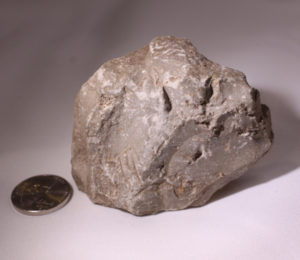
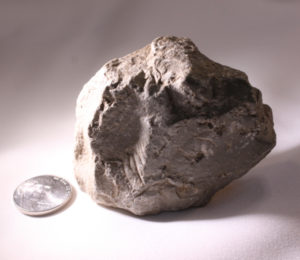
Photo 3. Artfact #2 from Kansas with 1-inch facet demonstrating raking light (side-lighting)“X’s”, especially where eyes are positioned, can be a clue to perceiving an intentional artfact profile. Artfact #3 (below) demonstrate a common practice of situating an “X” where the eye is positioned. The “X” symbol appears in many artfacts and is apparently a universal symbol inscribed on artfacts. “X’s” may be finely etched into the eye or other placements, and also may dominate the stone with larger sculpted or natural “X’s”, or have been created using natural fractures and features resembling “X’s”.
During 2018, I began communicating with Tim Banninger, an outdoorsman and rock art hunter from Kansas. Tim encouraged me to investigate portable rock art after he learned about the SEA micro petroglyph (noted above), resulting in a meeting in Kansas in November, 2018 at which time Tim shared with me his portable rock art theories and artfact specimens. Tim, age 55, has been a life-long resident of Kansas and presently lives in central Kansas, where we traveled to four sites to gather artfact samples.
Tim’s portable rock art discoveries began by accident as he was searching for knappable stones in the early spring of 2016. Looking for arrowheads, he found a “multi tool,” a hunting tool for processing game. Tim studied the tools for many months before noticing shadowy images and faces that he observed from the low angle lighting he had applied. As he studied these tools, he began to discern shallow etching and embellishments, including worked faces that were incorporated into the stones.
To find these subtle enhancements, Tim moves the object in his hand and aligns the stone at the proper line of sight and the optimum angle of incoming light to achieve the effect of side-lighting and the resulting surface shadows. He hypothesizes that the ancients employed a subtle grinding technique that created surface shadows depending upon the direction of light in relation to the surface and line of sight.
Portable rock art has been researched and detailed by Kenneth B. Johnston, a self-proclaimed “avocational archaeologist”. Johnston presents numerous anomalous portable rock objects that he calls, “a heretofore neglected component of the ‘official human record.’” His online resource center offers photos and writings about portable rock art, contributed by researchers around the world, addressing many issues including “verification of artifactuality and intended iconography in portable rock art.” Another excellent on-line collection of portable rock art has been created by Jul (Rocky) Jones, curator and editor of the Portable Rock Art Museum, a virtual, on-line collection of photos and information that confirms how portable rock art has been overlooked and how to identify it.
Artistic Perspective and Lithic Technology
Observing artfacts in photographs and drawings disguises the intricacies and the simplicities of the ancient art. In the best examples of artfacts we see a predominance of artistic enhancements that demonstrate both workmanship and functionality accompanied by artistic features. In other examples, however, simply adding a slight facial feature to a strategic location on a rock can create a facial profile on a natural surface or edge.
Working with a three-dimensional rock, we can see that these artisans had more available surface area and separate facets to work with in each artfact, compared with two-dimensional canvases or even three-dimensional sculptures, that fail to utilize side-lighting as a key design element.

An Artfact Example
Artfacts come in many sizes and shapes and are surprisingly more common than most of us would think.
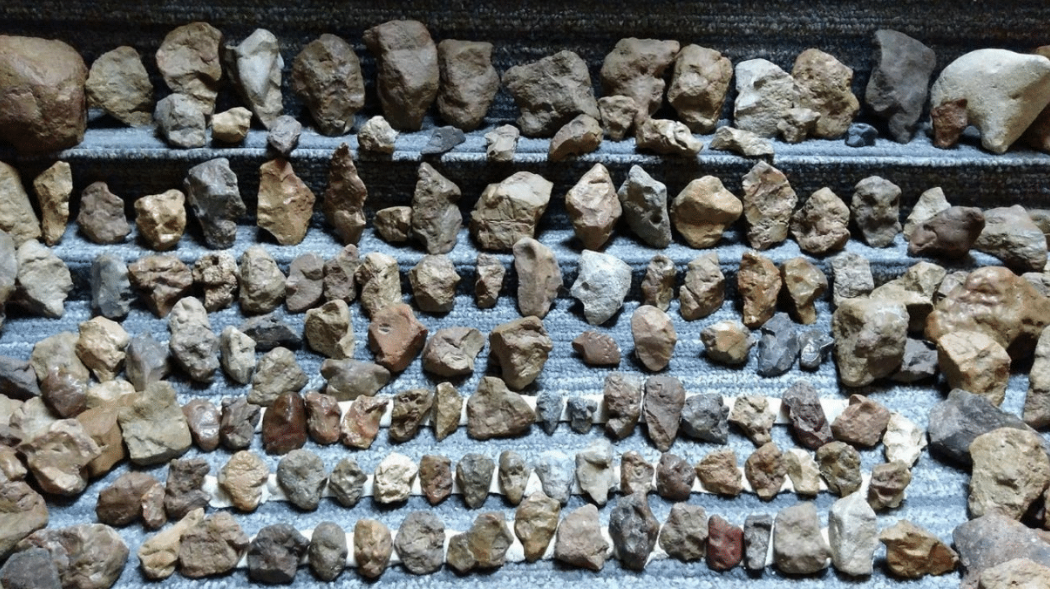 Photo 5. “Some of my best.” Tim Banninger Artfact Collection (photo by Tim Banninger)
Photo 5. “Some of my best.” Tim Banninger Artfact Collection (photo by Tim Banninger)
Yet, the fundamental question remains: how can artfacts be distinguished from natural forms and simulacrum?
Artfacts can be worked or natural stones in the shape of a face or animal, or they can display multiple faces within a single assemblage, which is revealed by moving the artfact under optimal light to emphasize different configurations and perspectives. The adjoining photo of a multi-facial artfact contains at least three cleverly devised anthropomorphic creations; yet it is easily passed off as merely a “scraper” tool.
Photo 6.A. Artfact #3, front. Note left side profile, forehead, and right side profile
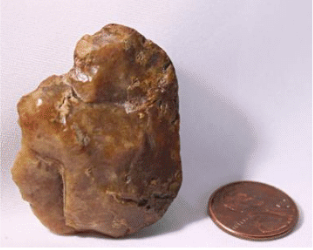
The object is recognizable immediately as a tool with heavily worked edges suitable for scraping, engraving and cutting. There are several positions to comfortably and firmly grasp the artfact for utility. When holding the smooth portion in the palm, two dinged extensions suggest previous use as an awl. Other grasping positions allow use of other edges for scraping and cutting. Extensive working on both sides results in multiple facets with smooth surfaces suitable for creating facial profiles.
Photo 6.B. Artfact #3, front left side forehead detail
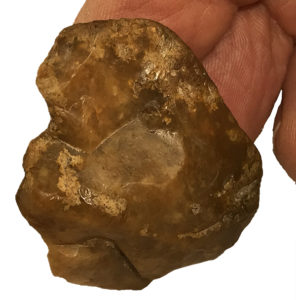
Photo 6.C. Front inverted artfact with prominent right side profile
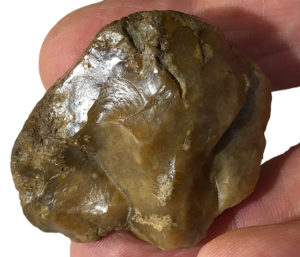
Photo 6.D. Another front side profile
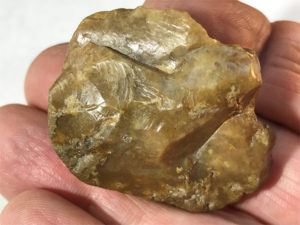
Photo 6.E. Back side of Artifact #3
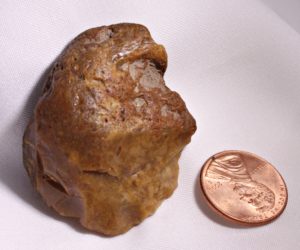
Photo 6.F. Detail of back side sculpted bird
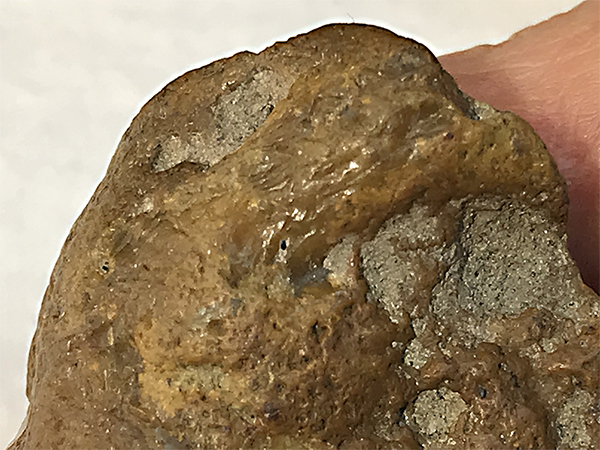
This multi-faceted artfact exhibits exceptional workmanship and artistry, such as multiple faces-in-faces, micro details, and etchings including “X”-like appearances on several micro images.There are other, less obvious images that are observable on the outer edge of the beveled tool edge. When rotated it one’s hand, this small artfact has a story to share with those perceptive enough to comprehend what they are looking at.
Grand artistry or pareidollia?
While most artfacts and portable rock art may not exhibit the exceptional detailed embellishments, “hidden” faces, and sculpted surfaces as Artfact #3 from Kansas, each has its own crafted intention. Some are tools, many are not. Differentiating the shape of the object as intended art and observing any micro embellishments—including facial micro images along the edges and within facets of the best artfacts—will require a new way of viewing what appear to be solely natural rocks or worked stone tools.
Advancing photo techniques, including Reflectance Transformation Imaging (RTI), are modern tools capable of documenting artistic embellishments and distinguishing them from random and natural features. Developed in 2001, RTI combines photography with computing to record surface features and to “re-light” the object from any angle using artificial light.
To understand these objects, we also need to use an open mind, patience, and imagination—the essential ingredients to seeing and appreciating this ancient art form. Since the beginning point for creating artfacts was our ancestor’s subjective imagination combined with natural features of an object, artfacts are not simply a matter of “this or that”. Rather than just a tool or a singular image, artfacts can be three-dimensional, multi-purpose creations for our imaginations to behold—where rocks, tools, natural forms and human working and embellishments become art.
The artistic ingenuity displayed by scores of artfacts collected from Kansas, Colorado, California and other locations in the U.S. and Europe contradict the opinions of many archaeologists that ancient work tools were simply “disposable” and little effort would have been expended on artistic embellishments. It turns out that the ancients had a tradition of bestowing imaginative features on stones and tools—heretofore unrecognized by the archaeological community —but not for long.
Author
Carell (Carl Lehrburger) is an occasional contributor to Ancient American Magazine beginning in 2006 and the author of Secrets of Ancient America: Archaeoastronomy and the Legacy of the Phoenicians, Celts, and Other Forgotten Explorers, Bear & Co. (2015). He is co-founder and an executive manager of PureVision Technology, Inc. and other PureVision renewable enterprises based in Fort Lupton, Colorado. Contact Carell@NewHistoryOfAmerica.com
References
i Documented by J. Fan Es in 1973 from the Netherlands, http://originsnet.org/boukoulgallery/index.htm
ii Kenneth B. Johnston, Archaeology of Portable Rock Art site, http://portablerockart.blogspot.com/
iii Enhanced photo found at PinInterest posted by Chris Anderson, Dixon Missouri, https://www.pinterest.com/pin/314266880218609696/
iv Lehrburger, Carl, April 2010 “Ancient Micro Art Discovery, California Heliolithic Petroglyph Animation Revealed on Equinox –Old World Origin Proposed” in Ancient American, Issue 87, 14:20-23. A video of the alignment can be viewed at https://www.newhistoryofamerica.com/gallery
v Tim can be contacted at Tim@NewHistoryOfAmerica.com
vi Johnston, http://portablerockart.blogspot.com/2015/04/
vii Jul (Rocky) Jones, Portable Rock Art Museum, https://www.rockartmuseum.com/
viii Johnston, http://portablerockart.blogspot.com/2012/11/rhomboid-forms-many-of-which-appear-to.html
ix Reflectance Transformation Imaging Overview, RTI Group, https://www.rtigroup.org/news/reflectance-transformation-imaging-a-brief-overview. See also Cultural Heritage Imaging at http://culturalheritageimaging.org/About_Us/
x Johnston, https://clustrmaps.com/site/h7i3?utm_source=widget